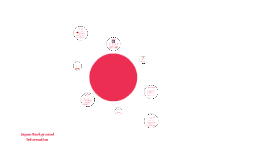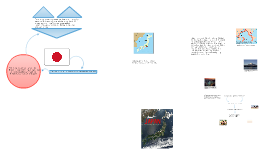Japan Presentation
Transcript: Shelter -Living costs in Japan are famous to be among the worlds highest -1 bedroom apartment inside city- 100,000 yen (1,143.45 CDN) -1 bedroom apartment outside city- 60,000 yen (686.07 CDN) -3 bedroom inside city- 189,000 yen (2,161.12 CDN) -3 bedroom outside city- 130,000 yen (1,486.48 CDN) -Price per square meter to buy apartment in city centre- 560,129.70 yen (6,404.80 CDN) -Price per square meter to buy apartment outside of city- 230,064.85 yen (2,630.67 CDN) -Western clothing preferred -Kimonos Fresh Water The Japanese Yen (1 CDN = 87.45 yen) Age Dependency Ratio Japan is a core country. Food US$5.867 trillion (2011) Capital: Tokyo Gini coefficient: 37.6 Prime Minister: Shinzo Abe Government: Democratic Development Japan Dining Customs and Traditions Health Care Population: 127,530,000 (down 0.4%) Makeup: 98.5% japanese, 0.5% Korean, 0.4% Chinese, 0.6% other. *Note:The census they send out asks the people’s nationality rather than their ethnic background, so naturalized japanese and japanese nationals with multi-ethnic background are considered japanese. DTM -Single family detached house and multiple unit building. -Houses have a short life span -Multipurpose rooms aside from kitchen, bathroom and entrance. Gender Ratio: 0.95 : 1 (boy:girl) Birth Rate: 9/1000 Average Life Expectancy: -79.64 (Males) -86.39 (Females) Death Rate: 10/1000 Solutions Cost of Living -Oil from the Middle East GDP Trading Power -Public dept is 230% of annual GDP -$13.64 trillion -Second largest dept in world (U.S.A. is first) Economy Major Export Products -Economy was based on manufacturing and industry, is not production, manipulations and dissemination of information -Loss of culture Marginalization -Judicial system -Empowerment of minority groups (women, physically/mentally challenged, homosexuals and racial groups) -JET program -Asian Free Trade Zone THE END Religion The Product Resources Increased birth rate will not help -Immigration -Agriculture -Rice -Education -Renewable resources -Wind energy Quality of Life -Drinking water and quality of waste water discharged into open watercourses typically exceeds national standards -Water quality in rivers and lakes does not meet environmental standards. -77% of the water comes from the surface -23% comes from groundwater -Regional/National public hospitals and private hospitals -Universal access, but higher charge without a referral -Limited amount of space -Public health insurance covers most individuals and covers +70% for care and prescriptions Human Development Index Population -Rice -Miso soup -Fish -Noodles -Soy Sauce -Sushi -13.2% below the age of 14 -23.1% over the age of 65 -63.7% working age. There is 1.75 working for every dependent individual. Music Canadian and World Issues Presentation 67% non-religious 22% Buddhism 3% Shintoism 2% Christianity 6% not stated General Facts Partners -You do not drink a beverage right away. Wait for someone to take the lead, make a speech, and yell “kampai” (cheers) -You will receive a small wet cloth to wash your hands prior to eating. -Slurping noodles and other hot foods is polite. It suggests you are enjoying it. -Raising the bowl to your mouth is okay. -Before you eat, you must say “itadakimasu” (I will receive). Fourth Stage (Decline) -Decline Rate: 1.5/1000 Migration Calyn Clark and Ainsley Black -Motor vehicles (21%) -Non-electrical machinery -tools and mechanical apparatus (21%) -Consumer electronics and semiconductors (18%) -Chemicals (12%) -Iron and steel products (15%) -Scientific and optical equipment (3%) Status: Unsustainable The Basics Immigration Rate: 1.599/1000 Target Immigration Countries: North and South Korea, Chinese, Filipinos, Brazilians, Peruvians. Immigration has gone up 14.9% in the last 5 years. There is a total of 2.5 million foreign citizens. Emigration: Unavailable Migration Rate: 0/1000 Currency -Ranking of 12 out of 187 countries -OECD is 0.873 so Japan is above the regional average -Spend an average of 11.6 years in school Dept Culture Clothing -Largest music market in the world (value of $4,096.7 million) -Gagaku -Jpop Globalization -China (30%) -United States (15%) -South Korea (7.5%) -Thailand (4.5%) -Germany (3%) -Population decline -Population of 127,530,000 in 2012 down to 50,000,000 in 2100 -Aging population -2040 has 1:1.5 (dependent:working) -2072 has 1:1 -Life expectancy increase -Labour shortage of 6.5 million in 2030.

















